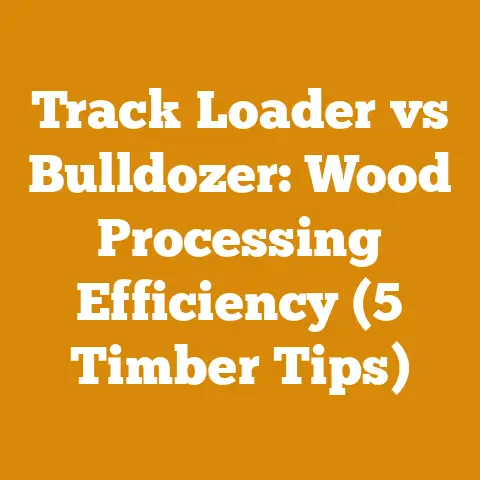How to Compute Moisture Content (Wood Processing Moisture Test)
Let’s dive in!
I’m excited to delve into a crucial aspect of wood processing and firewood preparation: understanding and measuring moisture content. Think of it as the secret sauce to achieving optimal burning efficiency, preventing chimney fires, and maximizing the value of your hard-earned timber. Before we get started, let’s talk about upgrades. Just like any craft, wood processing benefits immensely from having the right tools. Have you considered upgrading your trusty axe to a hydraulic log splitter? Or perhaps investing in a higher-quality moisture meter? These investments can significantly streamline your workflow and improve the quality of your end product.
Now, you might be wondering, “Why all the fuss about moisture?” Well, green wood – freshly cut wood – is loaded with moisture, often exceeding 50% or even 60%. Trying to burn this stuff is like trying to light a wet sponge. It sputters, smokes, produces minimal heat, and creates creosote buildup in your chimney, a serious fire hazard. Seasoned wood, on the other hand, has a moisture content below 20%, making it ideal for burning. It ignites easily, burns hotter and cleaner, and minimizes creosote formation.
According to recent statistics, the firewood industry is experiencing a resurgence, driven by rising energy costs and a renewed interest in sustainable heating solutions. However, a significant portion of firewood sold is still improperly seasoned, leading to consumer dissatisfaction and safety concerns. This highlights the importance of mastering moisture content measurement, both for personal use and for commercial firewood producers.
I remember one particularly harsh winter years ago. I had diligently stacked my firewood, or so I thought. Come January, I was struggling to get a decent fire going. The wood was hissing and spitting, barely producing any heat. Frustrated, I decided to investigate. Turns out, the wood at the center of the stack was still soaking wet! That experience taught me a valuable lesson about proper seasoning and the importance of regularly checking moisture content.
Why Moisture Content Matters: The Science Behind the Burn
Before we jump into the “how-to,” let’s understand the “why.” Moisture content significantly impacts wood’s properties and suitability for various applications, especially firewood.
- Burning Efficiency: Dry wood releases significantly more heat per unit of weight than wet wood. The energy used to evaporate the water in green wood is energy that could be used to heat your home.
- Creosote Buildup: Incomplete combustion of wet wood produces creosote, a tar-like substance that accumulates in chimneys. Creosote is highly flammable and a major cause of chimney fires. The National Fire Protection Association (NFPA) reports that chimney fires are a leading cause of residential fires, often linked to improperly seasoned firewood.
- Wood Rot and Decay: High moisture content promotes the growth of fungi and bacteria, leading to wood rot and decay. This weakens the wood’s structural integrity and reduces its lifespan.
- Dimensional Stability: Wood shrinks and swells as its moisture content changes. This can cause problems in woodworking projects, such as warping, cracking, and joint failure.
- Weight: Wet wood is significantly heavier than dry wood, making it more difficult to handle and transport.
Key Concepts:
- Green Wood: Freshly cut wood with a high moisture content (typically above 30%).
- Seasoned Wood: Wood that has been dried to a moisture content suitable for burning (typically below 20%) or woodworking (typically between 6% and 12%).
- Equilibrium Moisture Content (EMC): The moisture content that wood will eventually reach when exposed to a specific environment (temperature and humidity). EMC varies depending on location and season.
- Oven-Dry Weight: The weight of wood after it has been dried in an oven until all the moisture has been removed. This is used as a reference point for calculating moisture content.
Data Point: A study by the U.S. Forest Service found that burning firewood with a moisture content of 25% or higher can reduce heating efficiency by as much as 50% compared to burning properly seasoned wood.
Methods for Computing Moisture Content: From Simple to Sophisticated
There are several methods for determining the moisture content of wood, each with its own advantages and disadvantages.
-
The Oven-Dry Method: The Gold Standard
This is the most accurate method for determining moisture content. It involves weighing a sample of wood, drying it in an oven until it reaches a constant weight, and then calculating the moisture content based on the weight difference.
Materials:
- Wood sample (approximately 20-50 grams)
- Accurate scale (capable of measuring to 0.1 grams)
- Oven (capable of maintaining a temperature of 212°F or 100°C)
- Oven-safe container
- Gloves
- Notebook and pen
Procedure:
- Collect the Sample: Obtain a representative sample of the wood you want to test. For firewood, take samples from different logs and split them to get wood from the center. For lumber, take samples from different boards.
- Weigh the Sample (Wet Weight): Weigh the wood sample immediately after collecting it and record the weight (Wwet). This is the “wet weight.”
- Dry the Sample: Place the wood sample in the oven-safe container and put it in the oven. Set the oven temperature to 212°F (100°C).
- Dry to Constant Weight: Dry the sample until it reaches a constant weight. This means weighing the sample periodically (e.g., every 2-3 hours) and continuing to dry it until the weight no longer changes. This may take several hours or even days, depending on the size and initial moisture content of the sample.
- Weigh the Sample (Dry Weight): Once the sample has reached a constant weight, remove it from the oven and allow it to cool to room temperature. Weigh the sample again and record the weight (Wdry). This is the “dry weight” or “oven-dry weight.”
-
Calculate Moisture Content: Use the following formula to calculate moisture content:
Moisture Content (%) = [(Wwet - Wdry) / Wdry] x 100Where:
- Wwet = Wet weight of the wood sample
- Wdry = Oven-dry weight of the wood sample
Example:
Let’s say you weighed a wood sample and found that its wet weight was 40 grams. After drying it in the oven, you found that its dry weight was 25 grams. The moisture content would be:
Moisture Content (%) = [(40 - 25) / 25] x 100 = 60%Limitations:
- This method is destructive, as it requires cutting a sample of wood.
- It is time-consuming, requiring several hours or even days to complete.
- It requires access to an oven and an accurate scale.
Actionable Tip: When collecting your sample, try to get it from the center of the log or board. This is where moisture tends to linger the longest.
-
The Moisture Meter Method: Quick and Convenient
Moisture meters are electronic devices that measure the electrical resistance of wood. Since the electrical resistance of wood decreases as its moisture content increases, the meter can estimate the moisture content based on the resistance reading.
There are two main types of moisture meters:
- Pin-Type Meters: These meters have two or more pins that are inserted into the wood. They are generally more accurate than pinless meters, especially for thicker pieces of wood.
- Pinless Meters: These meters use electromagnetic waves to measure moisture content without penetrating the wood. They are convenient for quick checks and for measuring the moisture content of finished surfaces.
Materials:
- Moisture meter (pin-type or pinless)
- Wood sample
- Calibration block (optional, but recommended)
Procedure (Pin-Type Meter):
- Calibrate the Meter: Follow the manufacturer’s instructions to calibrate the meter using a calibration block or a known moisture content standard.
- Select the Wood Species: Many moisture meters have settings for different wood species. Select the appropriate species setting to improve accuracy.
- Insert the Pins: Insert the pins of the meter into the wood sample, making sure they are aligned with the grain.
- Take the Reading: Read the moisture content displayed on the meter.
- Take Multiple Readings: Take multiple readings at different locations on the wood sample and average them to get a more accurate estimate of the overall moisture content.
Procedure (Pinless Meter):
- Calibrate the Meter: Follow the manufacturer’s instructions to calibrate the meter.
- Select the Wood Species: Many moisture meters have settings for different wood species. Select the appropriate species setting to improve accuracy.
- Place the Meter on the Wood: Place the meter flat against the surface of the wood sample.
- Take the Reading: Read the moisture content displayed on the meter.
- Take Multiple Readings: Take multiple readings at different locations on the wood sample and average them to get a more accurate estimate of the overall moisture content.
Limitations:
- Moisture meters are less accurate than the oven-dry method.
- Pin-type meters can damage the wood.
- Pinless meters are less accurate on thick or uneven surfaces.
- Moisture meter readings can be affected by temperature, humidity, and wood species.
Actionable Tip: Always calibrate your moisture meter before use to ensure accurate readings.
-
The Soap Test: A Quick and Dirty Estimate
This method is a simple, low-tech way to get a rough estimate of moisture content. It involves applying soap to the end grain of a log and observing how quickly it is absorbed.
Materials:
- Bar of soap (dry)
- Log or piece of wood
Procedure:
- Expose End Grain: Ensure you have a freshly cut end grain surface on the log or piece of wood.
- Apply Soap: Rub the dry bar of soap firmly across the end grain.
- Observe Absorption: Watch how quickly the soap is absorbed into the wood.
-
Interpret Results:
- Rapid Absorption: Indicates high moisture content (likely above 30%). The soap will disappear quickly into the wood.
- Slow Absorption: Indicates moderate moisture content (likely between 20% and 30%). The soap will take some time to be absorbed.
- Minimal Absorption: Indicates low moisture content (likely below 20%). The soap will remain on the surface and not be absorbed readily.
Limitations:
- This method is highly subjective and provides only a rough estimate.
- It is not accurate for determining precise moisture content.
- It is not suitable for all wood species.
Personal Story: I once used the soap test to quickly assess the moisture content of a pile of firewood that I had purchased from a local vendor. The soap was absorbed almost instantly, indicating that the wood was far from seasoned. I promptly returned the wood and demanded a refund.
-
The Visual Inspection Method: Relying on Your Senses
This method relies on visual cues and your experience to assess the moisture content of wood.
Procedure:
- Observe the Wood: Look for signs of drying, such as cracks, splits, and discoloration.
- Check the Weight: Lift the wood and compare its weight to similar pieces of wood. Dry wood will be noticeably lighter than wet wood.
- Listen to the Sound: Knock two pieces of wood together. Dry wood will produce a clear, resonant sound, while wet wood will produce a dull, thudding sound.
- Smell the Wood: Dry wood will have a faint, pleasant smell, while wet wood may have a musty or sour smell.
Limitations:
- This method is highly subjective and relies on experience.
- It is not accurate for determining precise moisture content.
- It is not suitable for all wood species.
Actionable Tip: Over time, you’ll develop a keen eye for identifying dry wood. Pay attention to the subtle cues and trust your instincts.
Choosing the Right Method: A Decision Guide
The best method for computing moisture content depends on your specific needs and resources.
- For Maximum Accuracy: The oven-dry method is the gold standard. Use this method when you need precise measurements for scientific research, woodworking projects, or commercial firewood production.
- For Quick and Convenient Checks: Moisture meters are ideal for quick checks and for monitoring the drying process. Use a moisture meter to regularly assess the moisture content of your firewood or lumber.
- For a Rough Estimate: The soap test and visual inspection method can be used to get a quick, rough estimate of moisture content when you don’t have access to more sophisticated tools.
Data Point: A survey of professional woodworkers found that 85% use moisture meters to ensure the quality of their projects.
Factors Affecting Moisture Content: Understanding the Drying Process
The rate at which wood dries depends on several factors:
- Wood Species: Different wood species have different drying rates. Softwoods, such as pine and fir, tend to dry faster than hardwoods, such as oak and maple.
- Log Size: Smaller logs dry faster than larger logs.
- Air Circulation: Good air circulation is essential for drying wood. Stacking wood in a way that allows air to flow freely around each piece will significantly speed up the drying process.
- Temperature: Higher temperatures promote faster drying.
- Humidity: Lower humidity promotes faster drying.
- Stacking Method: Proper stacking is crucial for efficient drying.
Best Practices for Stacking Firewood:
- Elevate the Wood: Stack the wood on pallets or other supports to keep it off the ground and allow air to circulate underneath.
- Stack in Rows: Stack the wood in rows, leaving gaps between the rows to allow air to circulate.
- Crisscross the Ends: Crisscross the ends of the rows to provide stability and promote air circulation.
- Cover the Top: Cover the top of the stack with a tarp to protect it from rain and snow. However, leave the sides open to allow air to circulate.
- Orient to the Sun and Wind: Position the stack in a sunny and windy location to maximize drying.
Case Study: A firewood producer in Maine implemented a new stacking system that incorporated wider spacing between rows and improved ventilation. As a result, they reduced their drying time by 25% and improved the overall quality of their firewood.
Troubleshooting Common Issues: Avoiding Pitfalls
- Inaccurate Moisture Meter Readings: Ensure that your moisture meter is properly calibrated and that you are using the correct species setting. Take multiple readings and average them to get a more accurate estimate.
- Slow Drying Time: Ensure that your wood is properly stacked and that it is exposed to good air circulation, sunlight, and wind. Consider using a dehumidifier in enclosed spaces.
- Wood Rot: Prevent wood rot by storing your wood in a dry, well-ventilated area. Remove any wood that shows signs of rot to prevent it from spreading.
- Splitting: Wood can split as it dries. To minimize splitting, dry the wood slowly and evenly. Consider using end sealers to prevent moisture from escaping too quickly from the ends of the logs.
Idiom Alert: Remember, “Rome wasn’t built in a day,” and neither is properly seasoned firewood. Patience is key!
Cost Considerations: Budgeting for Success
The cost of measuring moisture content can vary depending on the method you choose.
- Oven-Dry Method: The cost is relatively low if you already have an oven and a scale. However, you will need to factor in the cost of electricity and the time required to dry the samples.
- Moisture Meter: The cost of a moisture meter can range from $20 for a basic pin-type meter to $500 or more for a professional-grade pinless meter. Consider the features and accuracy you need when choosing a moisture meter.
- Soap Test and Visual Inspection: These methods are essentially free.
Resource Management Tip: If you are a small workshop or independent logger, consider investing in a good-quality moisture meter. It will pay for itself in the long run by helping you to avoid costly mistakes and to produce high-quality firewood or lumber.
Next Steps and Additional Resources
Now that you have a solid understanding of how to compute moisture content, it’s time to put your knowledge into practice.
- Start Measuring: Begin measuring the moisture content of your firewood or lumber.
- Experiment with Drying Techniques: Try different stacking methods and drying techniques to see what works best for your local climate and wood species.
- Keep Records: Keep records of your moisture content measurements and drying times. This will help you to refine your process and improve your results over time.
Additional Resources:
- U.S. Forest Service: The U.S. Forest Service offers a wealth of information on wood properties, drying techniques, and firewood safety.
- Local Extension Offices: Your local extension office can provide advice and resources on wood processing and firewood preparation.
- Woodworking Forums: Online woodworking forums are a great place to connect with other woodworkers, ask questions, and share your experiences.
-
Suppliers of Logging Tools and Drying Equipment:
- Bailey’s: Offers a wide range of logging tools, chainsaws, and firewood processing equipment.
- Northern Tool + Equipment: Carries a variety of moisture meters, log splitters, and other wood processing tools.
- Amazon: A convenient source for moisture meters, tarps, and other supplies.
Compelling Phrase: Don’t just take my word for it – get out there, experiment, and discover the joy of working with perfectly seasoned wood!
Conclusion: Embracing the Art and Science of Wood Processing
Computing moisture content is not just a technical exercise; it’s an art form that combines science, experience, and intuition. By mastering this skill, you’ll unlock the full potential of your wood, whether you’re heating your home with a cozy fire or crafting beautiful woodworking projects. So, grab your moisture meter, sharpen your axe, and embark on your wood processing journey with confidence! Remember to always prioritize safety, respect the environment, and enjoy the process. Happy wood processing!






